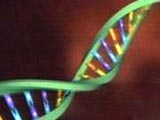How The FTO Gene Affects Body Weight
Wednesday, March 26, 2014 Body weight is one of the most heritable of physiological traits – in fact (believe it or not), it is just as heritable as body height.
Body weight is one of the most heritable of physiological traits – in fact (believe it or not), it is just as heritable as body height.
Among the many genes associated with body weight, data for the FTO gene have been most consistent.
But these finding have puzzled researchers, as genetic manipulations of the coding regions of the FTO gene have large effects on body weight, without any apparent change in the function of this gene.
Now, a paper by Scott Smemo and colleagues, published in NATURE, suggests a mechanism for how variants of the FTO gene may affect body composition.
The answer lies in the way that the region of the FTO gene associated with obesity directly interacts with another gene IRX3, located a few megabases away on the same chromosome. This interaction appears conserved across species all the way back to the zebrafish.
Consistent with this finding, it turns out that the obesity-associated single nucleotide polymorphisms of the FTO gene are associated with changes in the expression of IRX3, but not FTO, in human brains.
Also consistent with this idea is the fact that IRX3-deficient mice have a 30% lower body weight, primarily due to less fat mass and an increase in basal metabolic rate with browning of white adipose tissue. The animals also appear resistant to the effects of a high-fat diet and appear protected against diabetes.
Furthermore, expression of a dominant-negative form of IRX3 in the hypothalamus reproduces the metabolic phenotypes of Irx3-deficient mice.
Thus, these findings suggest that FTO exerts its effect on body weight through its functional impact on the IRX3 gene, a gene that has so far not been linked to body weight regulation.
This is of particular significance, as IRX3 appears to be a “master gene” that controls the expression of other genes in many tissues including the brain and fat cells.
Given that variants of the FTO gene are frequent in the population and consistently linked to obesity (and type 2 diabetes), these findings may take us one step closer to a molecular target for anti-obesity interventions.
@DrSharma
Edmonton, AB
![]() Smemo S, Tena JJ, Kim KH, Gamazon ER, Sakabe NJ, Gómez-Marín C, Aneas I, Credidio FL, Sobreira DR, Wasserman NF, Lee JH, Puviindran V, Tam D, Shen M, Son JE, Vakili NA, Sung HK, Naranjo S, Acemel RD, Manzanares M, Nagy A, Cox NJ, Hui CC, Gomez-Skarmeta JL, & Nóbrega MA (2014). Obesity-associated variants within FTO form long-range functional connections with IRX3. Nature, 507 (7492), 371-5 PMID: 24646999
Smemo S, Tena JJ, Kim KH, Gamazon ER, Sakabe NJ, Gómez-Marín C, Aneas I, Credidio FL, Sobreira DR, Wasserman NF, Lee JH, Puviindran V, Tam D, Shen M, Son JE, Vakili NA, Sung HK, Naranjo S, Acemel RD, Manzanares M, Nagy A, Cox NJ, Hui CC, Gomez-Skarmeta JL, & Nóbrega MA (2014). Obesity-associated variants within FTO form long-range functional connections with IRX3. Nature, 507 (7492), 371-5 PMID: 24646999


